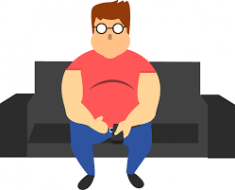Joining us in the studio now for our your health segment dr. Ngozi Aqaba DK an assistant professor of orthopedics at the University of Maryland School of Medicine and upper extremity surgeon at the University of Maryland Medical system dr. thank you for being with us thank you for having me when you operate on upper extremities we’re talking about this part we’re talking about from the fingertips all the way to the shoulder and one of the things we wanted to talk about was overuse injuries what’s meant by that so it’s a general term that’s used to categorize complaints that come from doing certain things over and over and over again and so that way you’re pasting a lot of burden in different parts of your body people who sit at a computer and type all the time frequently complaining of carpal tunnel syndrome not going what either.
I don’t type that much or I’ve never been predisposed to it what happens there so carpal tunnel syndrome is probably one of the co most common elements that we see in upper extremity disorders and it’s really a compression of one of the main nerves that go into the hands and what happens is the nerve traveled in the space of the level of your wrist called the carpal tunnel so it’s a space that’s formed by the carpal bones which are your proper wrist bones and the ligament right here in your palm and when certain maneuvers put pressure under nerve and it irritates the nerve in the predominant complaint is numbness and tingling in your fingertips for some your index finger your middle finger and your ring finger so it’s not a circulatory thing there’s not is it a lack of blood flow or its nerve impingement.
It’s a nerve impingement and it’s the nerve impingement at the level of the wrist in the head if you go to an office supply store you see those little pads that are meant to sit right in front of the keyboard so your wrist would kind of be resting on that does it help this is a very good question and now even though there’s a lot of data out there and a lot of things to suggest that potentially type and can contribute to it having the wrist in a neutral position is probably the most helpful things that you don’t put undue stretch under the nerve and in the hyper-extended position of flex position so there are a lot of ergonomic aids out there just like you described to help you keep it in a neutral position so you’re not stressing out that nerve have you ever seen a teenager on a smartphone texting I’ve never seen thumbs move as a sort of like a hummingbird’s wings it’s just flat a thousand beats a second does anything result from that in terms of overuse.
This is very another good caution a lot of times the patients will overuse and use specific joints over and over again and doing something like that where you’re firing our way back and forth with the small joints of the thumbs specifically this joint and the MP joint can cause strain the ligament but typically they’re self-limited and don’t result in chronic issues down the road he was pretty sure the digits weren’t designed for specifically that that function correct but no harm you haven’t seen any harm usually a short period of rest at splinting and avoiding that inciting activity tend to quiet the Centers death let me remind our viewers if you have any questions about upper extremities carpal tunnel or other conditions sports-related that we’re going to get to we’ll have the number up on the screen.
Please give us a call you could also tweet a question our twitter address is @mptnews I mentioned sports summertime a lot of people outdoors with golf clubs and tennis rackets and that sort of thing what goes wrong so there’s some of the more common complaints with C with those types of racket sports and golf and activities are tendonitis tendonitis are inflammation or irritation of the tendons at the elbow and sometimes at the rest the very common colloquial term is a tennis elbow syndrome with a golfer’s elbow and tennis elbow is when the tendons on the outer aspect of the elbow are the ones that are irritated and inflamed in golf balls a bores on the inside of the elbow again the same thing sort of this repetitive activities that cause the irritation and patients who really notice em the symptoms when they’re doing those activities interestingly enough we see those symptoms more and other repetitive activities not particularly tennis elbow so you’re more likely to see a lot of epicondylitis of somebody who is doing some other repetitive activities like whacking weeds or something else versus just classic tennis player that is determined for soso tennis elbow most often doesn’t come from tennis and I’m sure you have a medical term for what’s this solution sure the medical term is lateral epicondylitis and again a lot of the initial treatments is your resting splinting and using a conifer strap to rest the origin of the tendon and to inflammatory medications so your ibuprofen or leave any kind of anti-inflammatory over-the-counter and really rest in the area let’s take some phone calls this is Maureen in Baltimore City Maureen thanks for calling go ahead dr.
Ngozi aqua-blue BK is such a specialist joining us from the University of Maryland Medical Center doctor thanks for your time tonight thank you for having me appreciate it your health segments are a co-production of Maryland public television and the University of Maryland Medical System.






